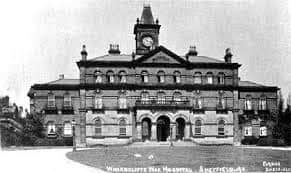How a Sheffield asylum patient who 'murdered' another inmate never faced trial because they were ruled to be insane
and live on Freeview channel 276
The attack happened against Sheffield man Thomas Wigglesworth Oates - a 56-year-old painter who lived on Prospect Road, Heeley, prior to his admission - on January 13.
Mr Oates died five days later, essentially from the ruptured groin, but he had also developed meningitis and his lungs had filled with fluid following the incident and the coroner ho heard the case instructed the jury to rule that meningitis was the primary cause of death, as he saw “no useful purpose in returning a verdict of murder.”
Advertisement
Hide AdAdvertisement
Hide AdIf the coroner had gone by the book, the case would have been sent to a committal hearing, where a judge would have ruled on the defendant’s suitability to plea.


Instead the attacker, one John William Hartell, was returned to the asylum where he had a long history of violent attacks on other inmates.
A newspaper report from the time states: “Mr Deputy Coroner Kenyon-Parker said if Hartell had been a sane man he would without hesitation advised the jury to return a verdict of murder. Speaking very strictly that was the proper verdict, but except for in cases of suicide, a coroner’s jury had no business to inquire into a man’s state of mind.
“But in practice he did not see that much useful purpose would be served by there returning a verdict of murder.”
Advertisement
Hide AdAdvertisement
Hide AdIn a separate report from the Yorkshire Telegraph and Star, dated from March 24, 1910, described how the deceased was on his way to an exercise yard with 22 other patients when Hartell suddenly rushed at him, kicking him hard to the groin.
Evidence was also given by staff at the asylum who said that both men were in a lower security wing with only three guards because, despite Hartell being a high risk of violence, the higher security wards were situated on higher floors and he had once jumped out of a window.